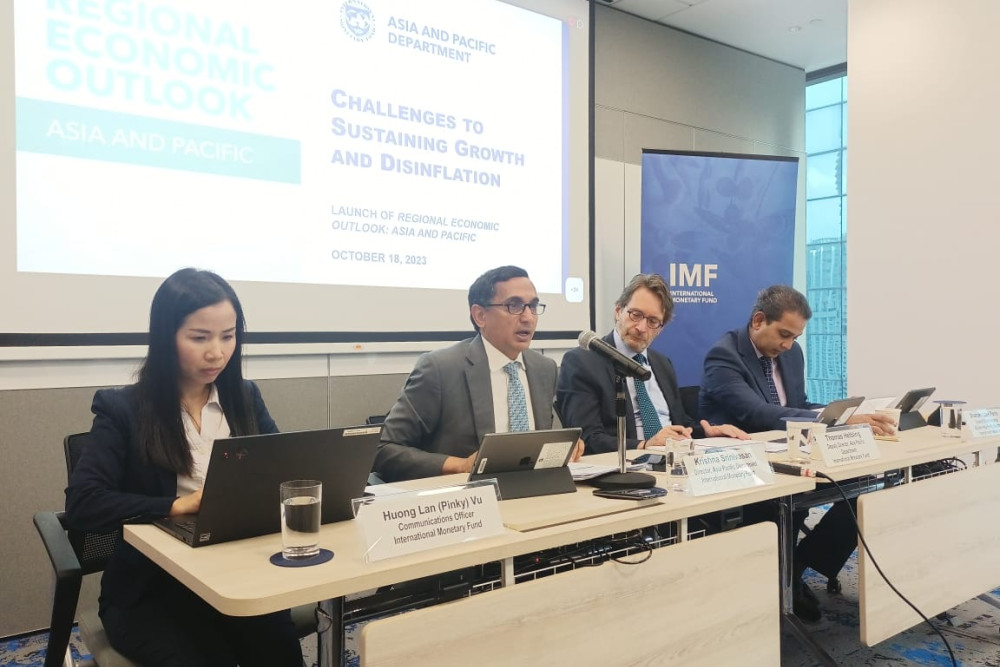Krishna Srinivasan, Director of the IMF’s Asia and Pacific Department (second from left); Thomas Helbling, deputy director of the IMF’s Asia and Pacific Department (third from left); Shanaka (Jay) Peiris, Regional Studies Division Chief, IMF Asia and Pacific Department (far right); and Huong Lan (Pinky) Fu, IMF communications officer (left). The IMF delivered a presentation on Wednesday (10/18/2023) on the regional economic outlook in the Asia-Pacific region./Bisnis-Emanuel B. Cesario
Bisnis.comSINGAPORE — The International Monetary Fund (IMF) estimates that the global economic situation will remain difficult in the medium term for countries in the Asia-Pacific region.
In a report titled Regional Economic Outlook: Asia and the Pacific, the IMF found that central banks around the world were increasingly tightening monetary policies, although the decline in global commodity prices after a peak in 2022 is expected to support the deflation.
Although the reopening of Asian economies after the end of the pandemic tends to be slower than in other regions, Asia continues to benefit from a strong increase in domestic demand. However, external demand has actually slowed significantly.
The IMF believes this is due to a shift in global demand from goods to services and a stronger-than-expected decline in the technology cycle.
In the first quarter of this year, growth in the Asia-Pacific region generally exceeded expectations, while the second quarter was met with surprises from all sides.
Strong growth in private consumption supports economic growth, as Asian households are likely to spend some of their excess savings accumulated during the pandemic.
The boost provided by the reopening of the Chinese economy in the first half also exceeded expectations. Additionally, strong private demand has led to surprisingly positive growth in India.
In Japan, growth also exceeded expectations, driven by strong domestic demand as well as a sharp rise in automobile exports due to the standardization of supply chains.
Goods-exporting countries in this region, such as ASEAN countries, Korea, Taiwan Province and China, tend to come under pressure as the global economy now shifts towards services.
The latest IMF data shows a slowdown in growth momentum in the Asia-Pacific region.
In China, the economic recovery is increasingly weakening, with the purchasing managers’ indices (PMI) of the manufacturing sector entering the contraction zone from April to August and the situation of the real estate sector is increasingly deteriorating. .
Although several countries in the region have benefited from increased Chinese tourist arrivals, Chinese outbound tourism activity has not yet fully recovered.
Investment remained subdued, perhaps reflecting weakening external demand and the technology cycle. There are now clear signs of an economic slowdown in investment, with a marked difference from pre-pandemic trends.
Check out other news and articles at Google News

“Zombie geek. Beer trailblazer. Avid bacon advocate. Extreme introvert. Unapologetic food evangelist. Internet lover. Twitter nerd.”


/data/photo/2020/09/05/5f52b2e6eab46.jpg)
/data/photo/2015/05/05/1249315TVS-Digitec-R780x390.jpg)



